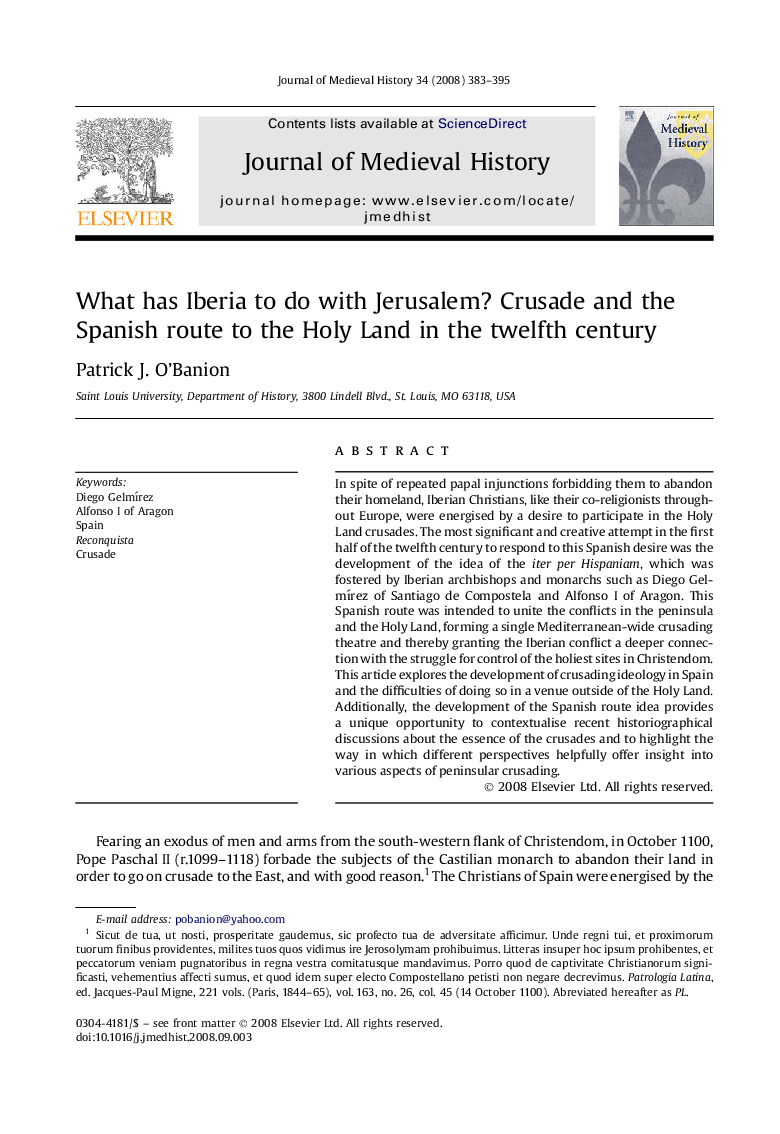| Article ID | Journal | Published Year | Pages | File Type |
|---|---|---|---|---|
| 1159862 | Journal of Medieval History | 2008 | 13 Pages |
In spite of repeated papal injunctions forbidding them to abandon their homeland, Iberian Christians, like their co-religionists throughout Europe, were energised by a desire to participate in the Holy Land crusades. The most significant and creative attempt in the first half of the twelfth century to respond to this Spanish desire was the development of the idea of the iter per Hispaniam, which was fostered by Iberian archbishops and monarchs such as Diego Gelmírez of Santiago de Compostela and Alfonso I of Aragon. This Spanish route was intended to unite the conflicts in the peninsula and the Holy Land, forming a single Mediterranean-wide crusading theatre and thereby granting the Iberian conflict a deeper connection with the struggle for control of the holiest sites in Christendom. This article explores the development of crusading ideology in Spain and the difficulties of doing so in a venue outside of the Holy Land. Additionally, the development of the Spanish route idea provides a unique opportunity to contextualise recent historiographical discussions about the essence of the crusades and to highlight the way in which different perspectives helpfully offer insight into various aspects of peninsular crusading.
